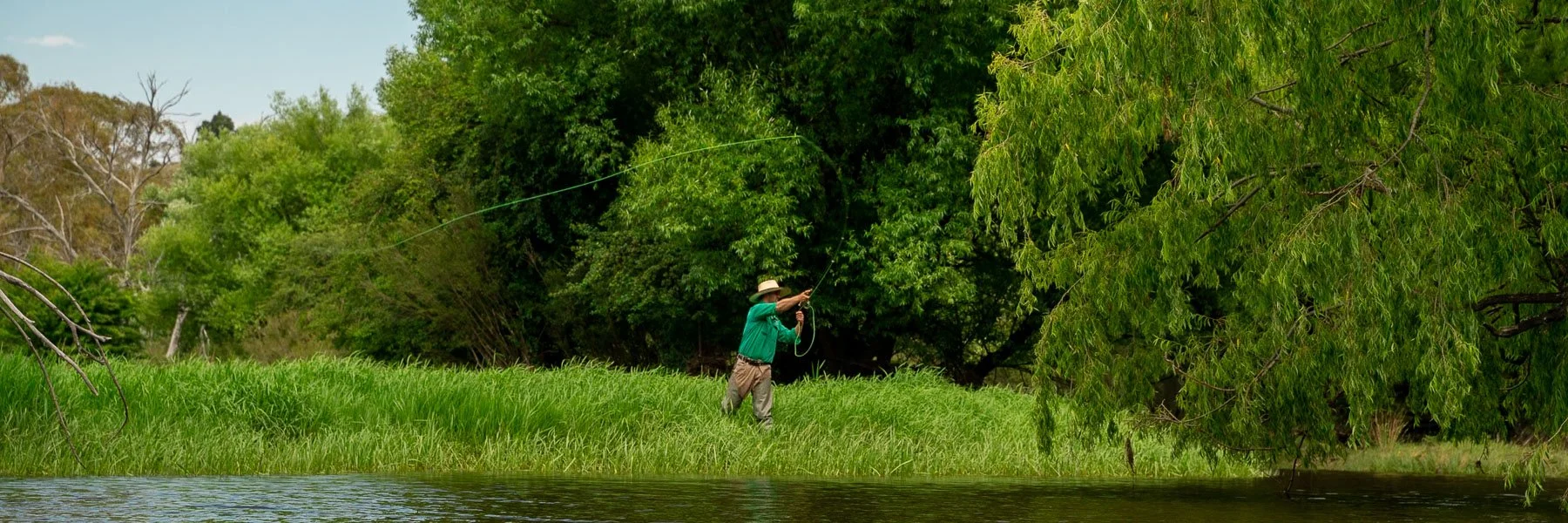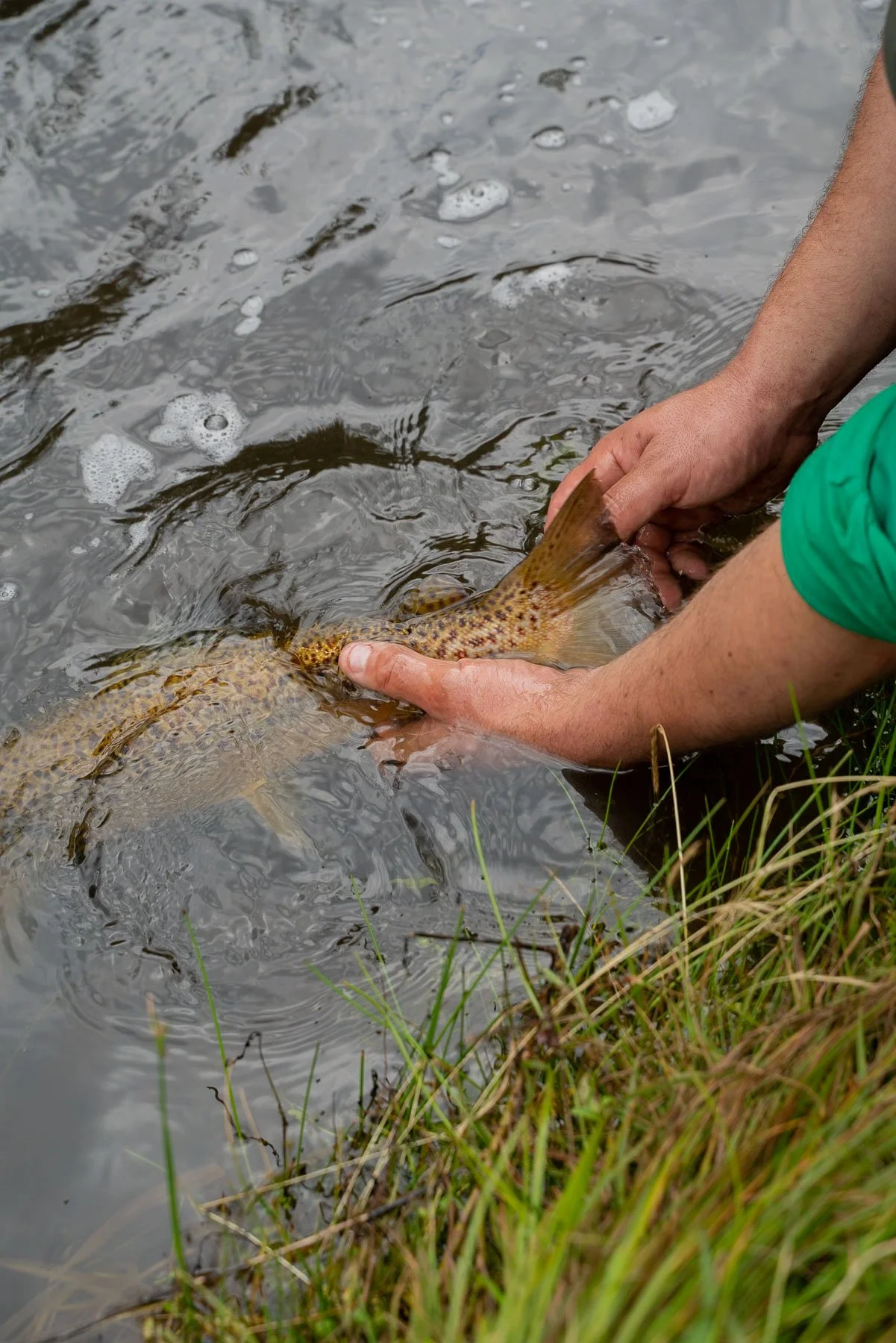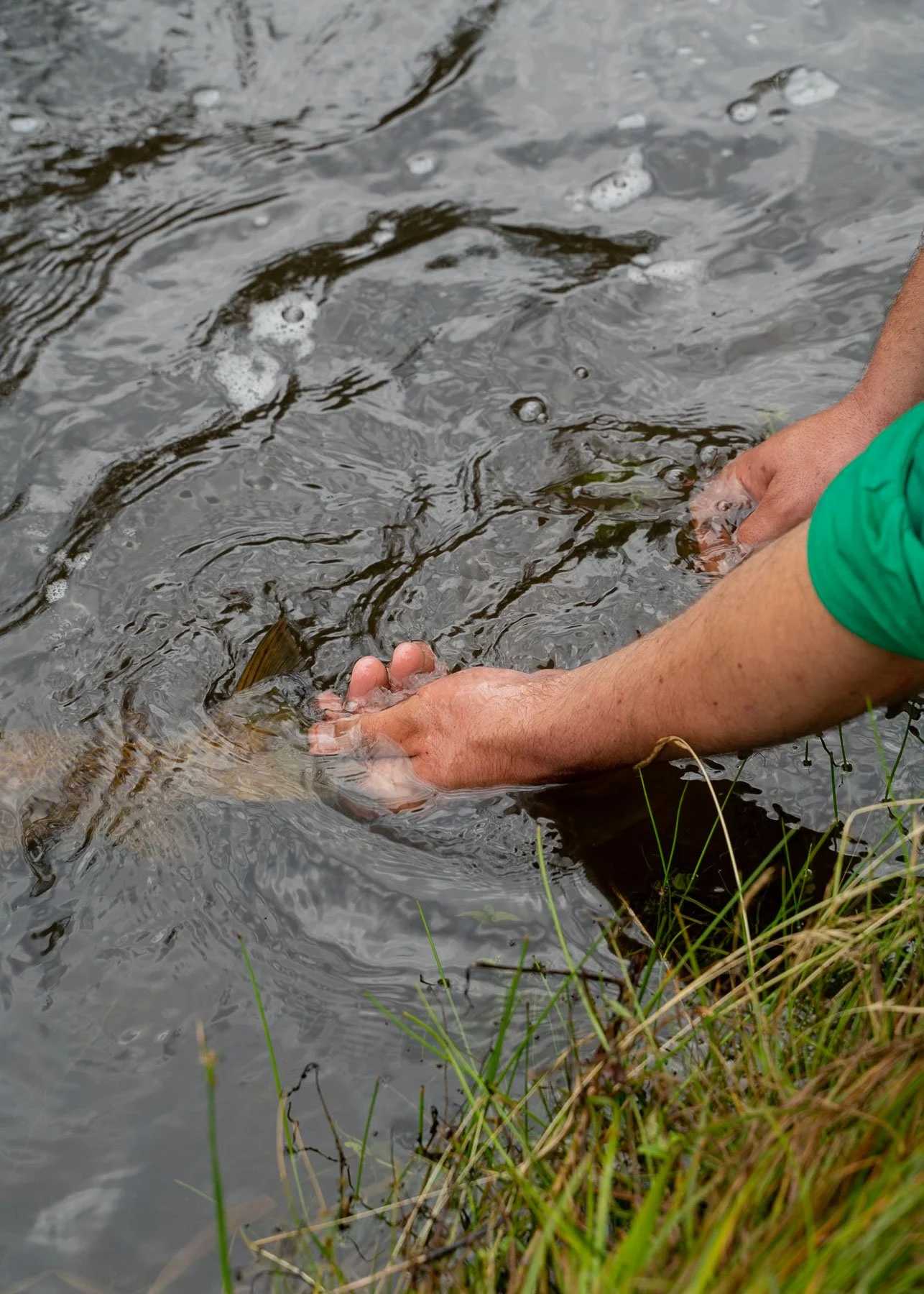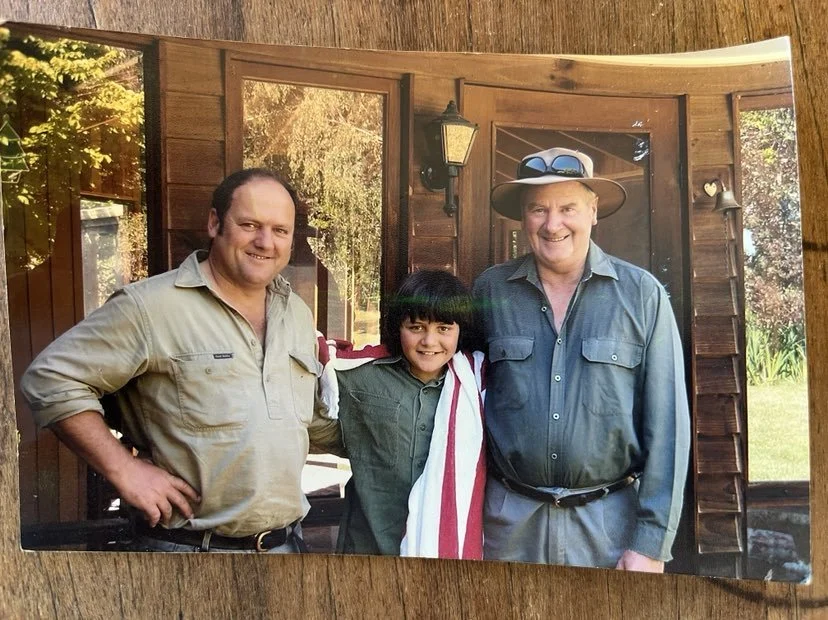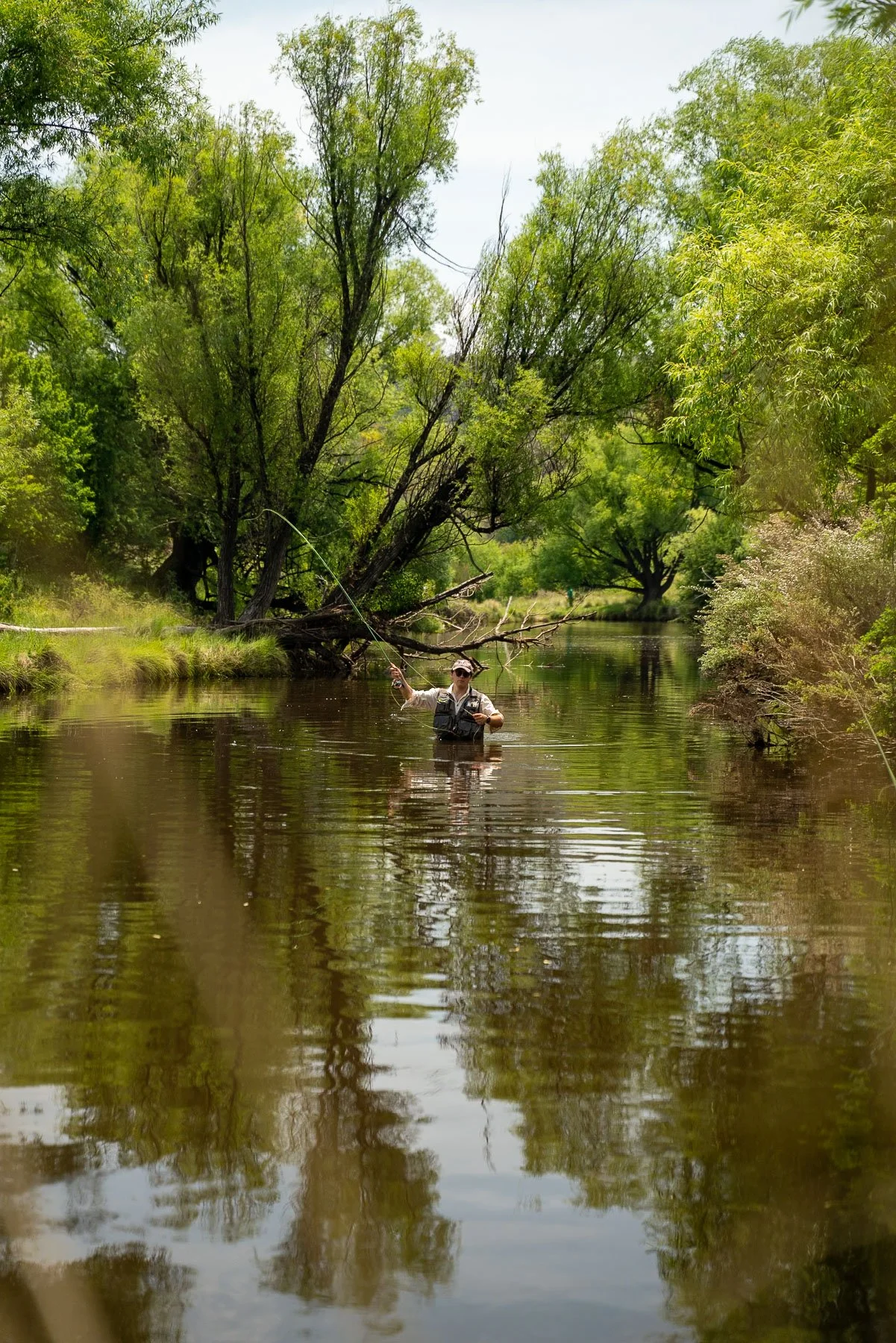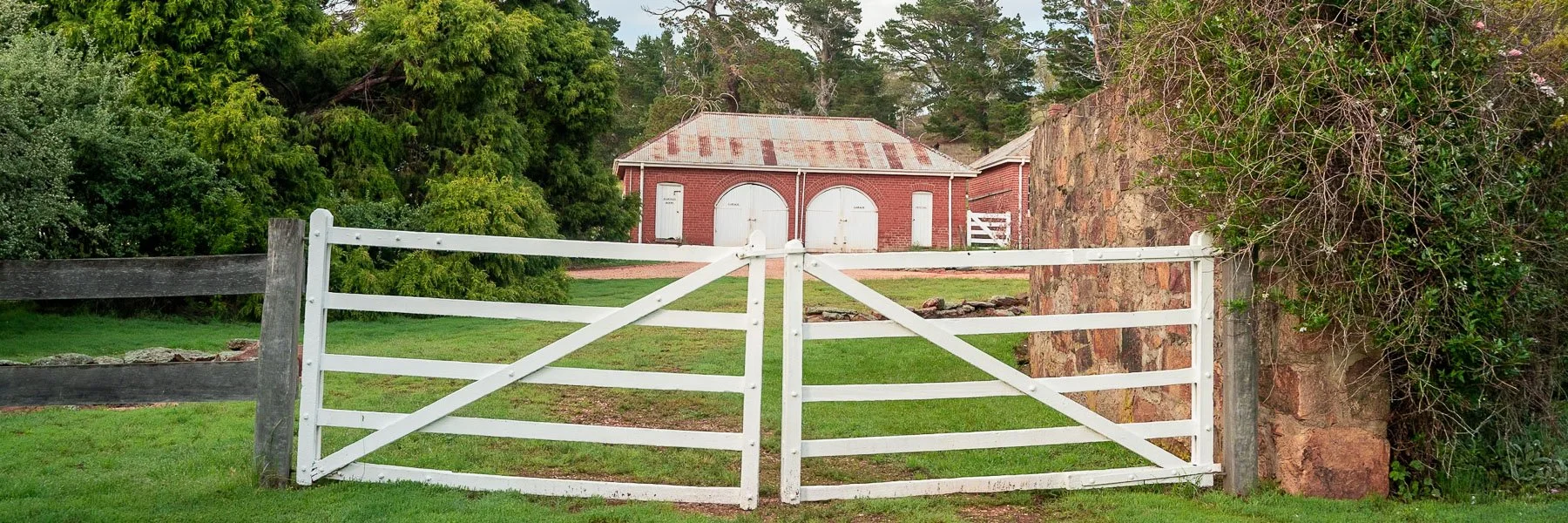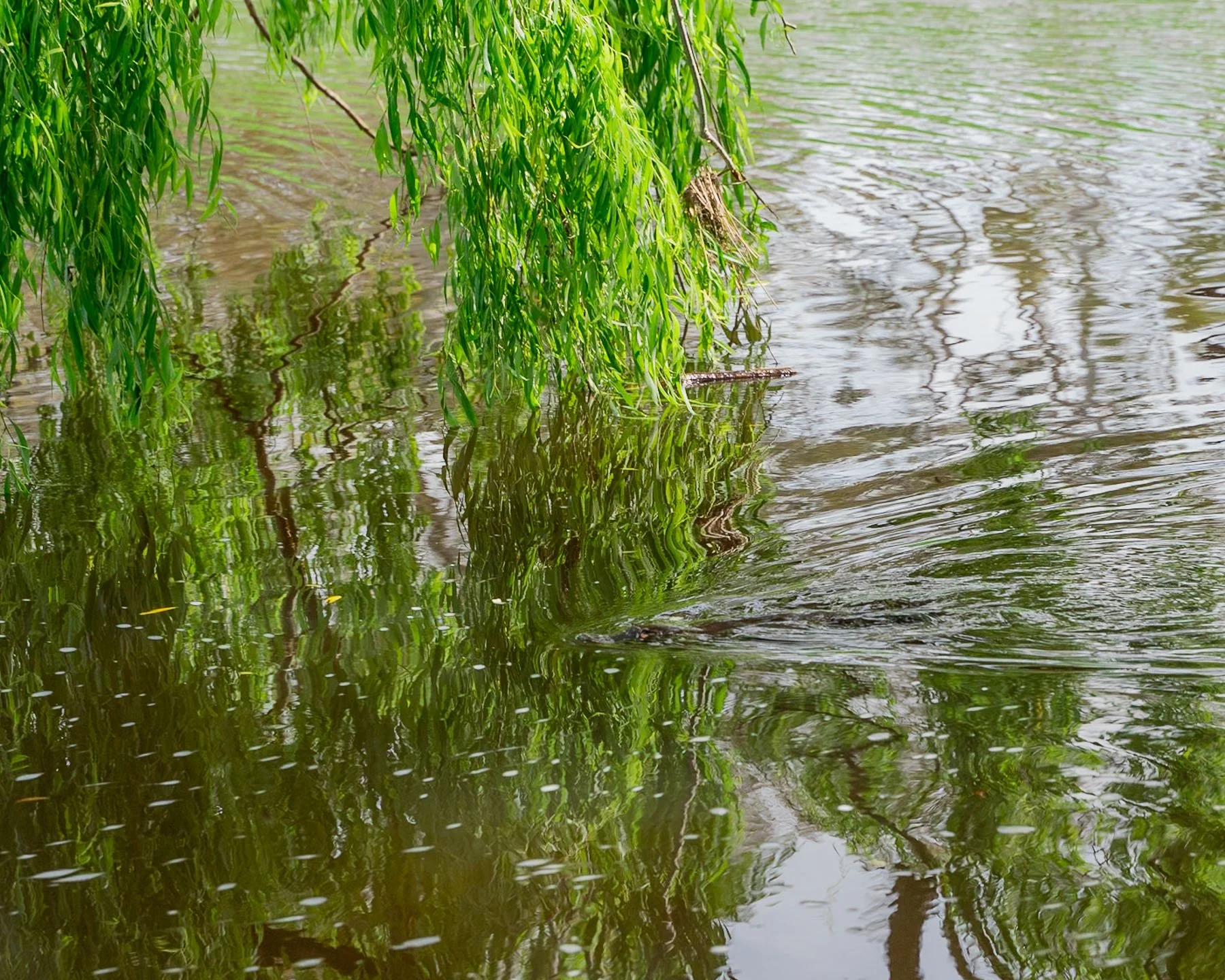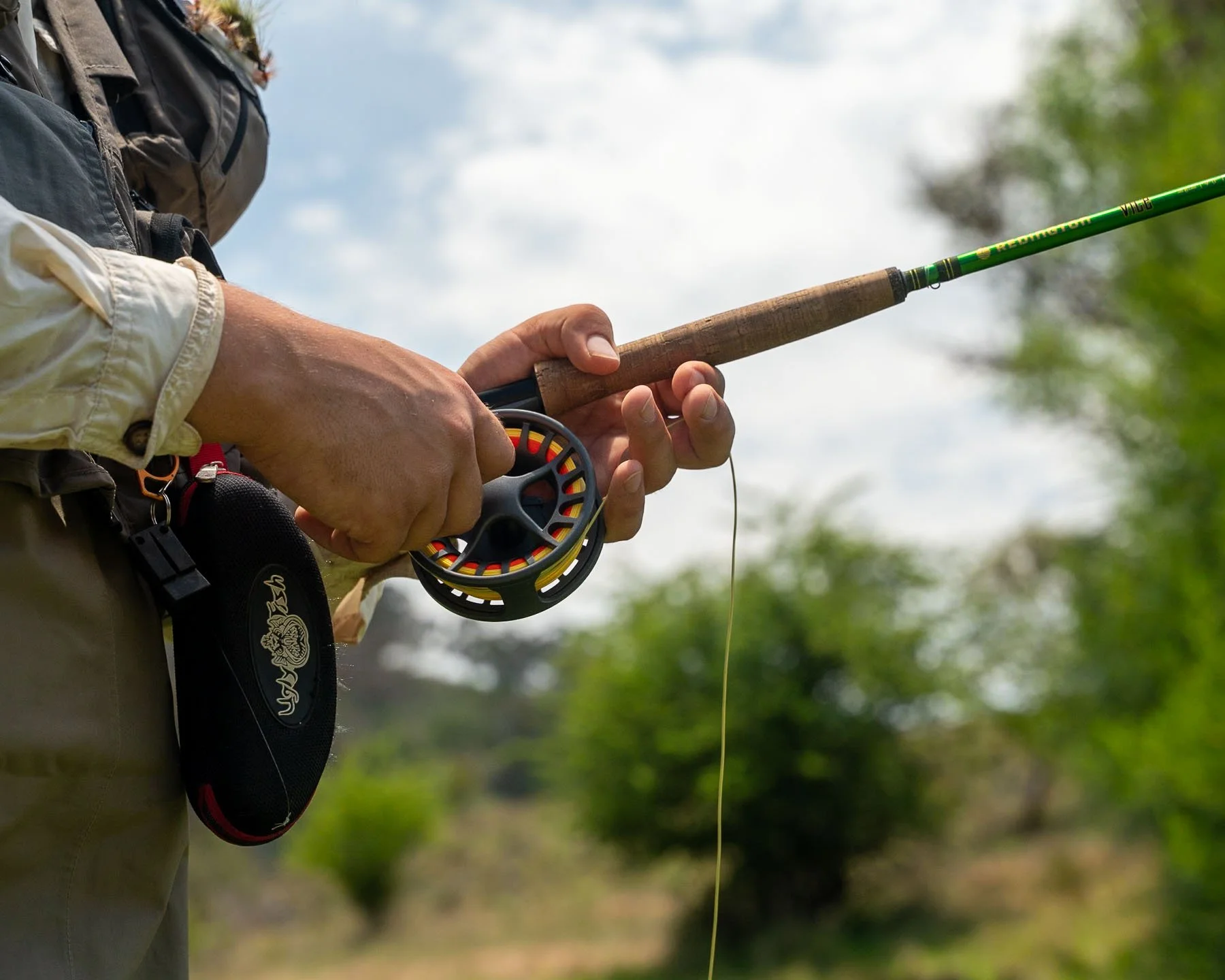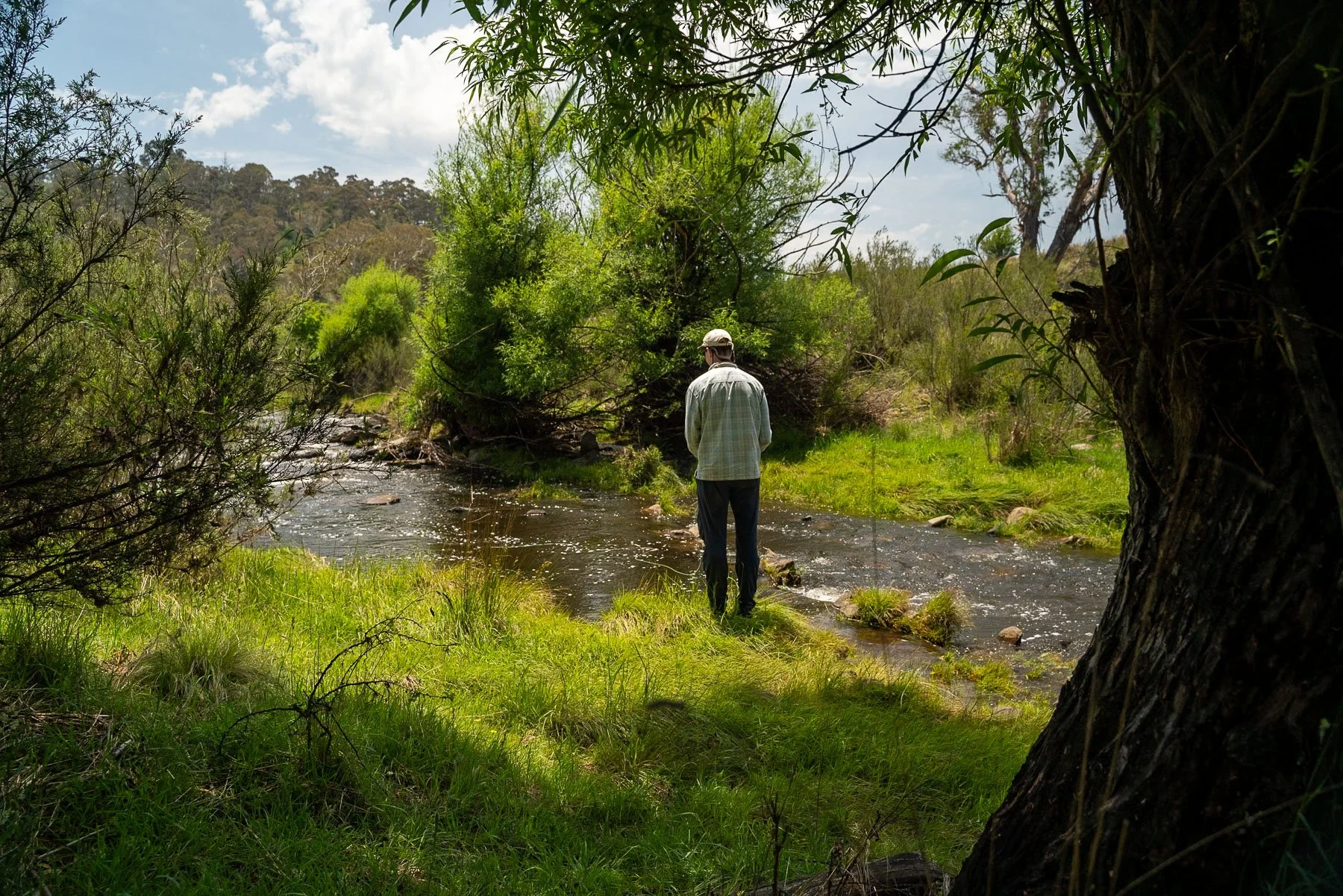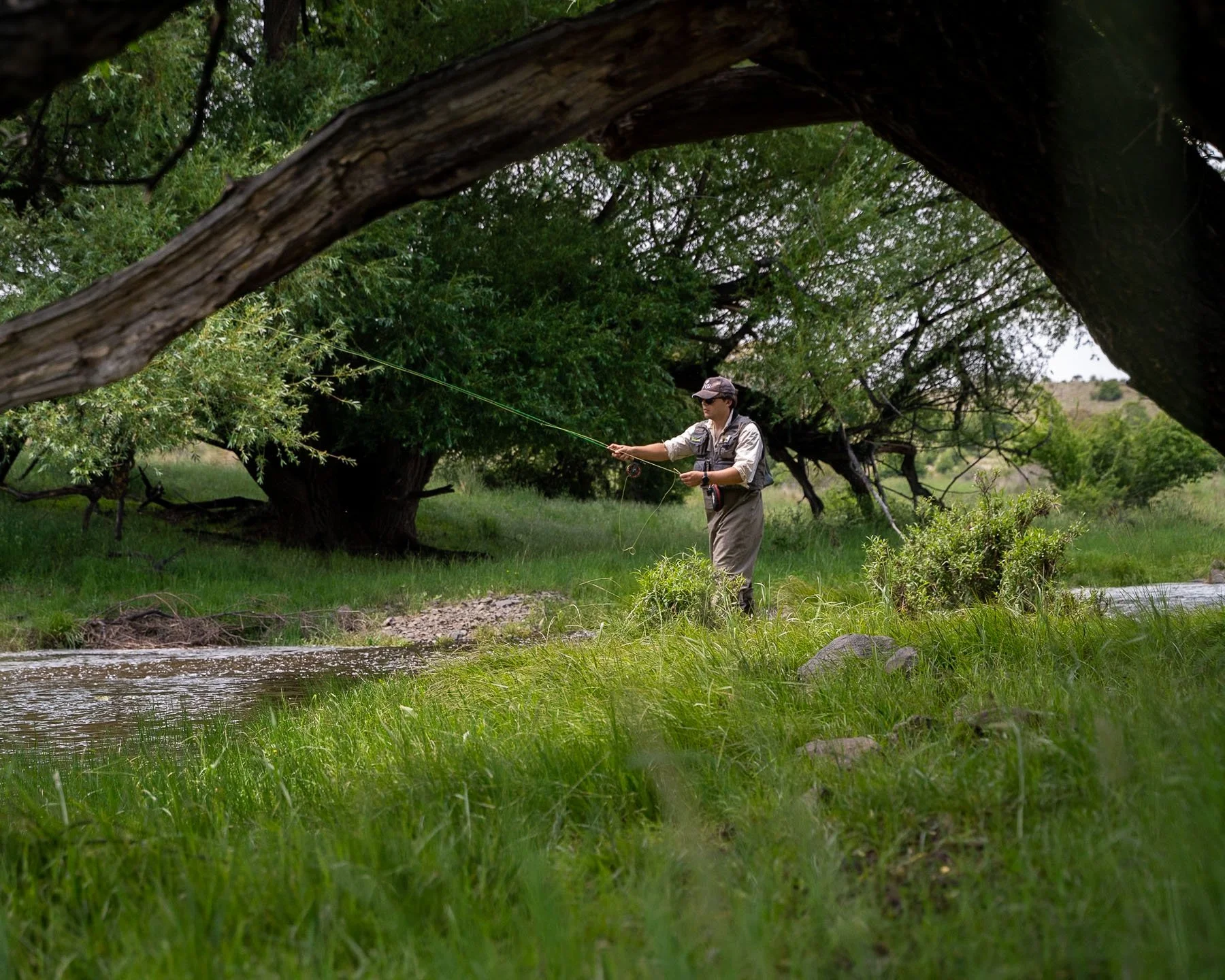Fly Fishing the Monaro
A narrow river cuts deep into the Monaro high plains near Nimmitabel, forming a valley that is so overgrown and hard to access that it’s seldom fished. Volcanic basalt soils leak nutrient-rich water into the stream, a reminder of the violent eruptions that formed the land here. Such water makes trout grow fat and wary, an alluring prospect for any fly angler.
I learnt to fish on this river, fifteen years ago. Back then I hated it. An old friend of my grandparents, Peter, taught me the basics. He was a brusque and traditional fly-fisherman. He gave me the briefest of trainings, a two-minute demonstration on casting, 10 - 2 o’clock, and a once-over on tying on a hook. After this interruption to his morning, Peter retreated back to his own company. Puffing at his pipe, he got into his truck saying, “let me know when you can cast across this pool.” It seemed an impossible task. My father, an avid angler, was already well upstream and out of sight. I felt duped; the premise of the trip was to spend time with dad.
Since then, I’ve come around to fly-fishing, and returning this past December with two close friends, I fell a little deeper in love with the sport. I felt an intense empathy with both characters, too: Peter’s desire for solitude in nature; and my father’s voracious hunger to get fishing.
The drive cross paddock and down to the river was punctuated with intricate and varied gates, each with a different and equally baffling arrangement of lock and latch. A true marker you're fishing on the Monaro. Weaving our way down the valley, cutting a path balancing the forgiving topography and sparse avenues of briar bush, two huge wedge tailed eagles startled Henry, Darcy and me, heaving themselves skyward (seemingly emerging from beneath the bonnet of the car) before circling the valley gracefully. Briar, willows and native shrub line the banks where the river bubbles steadily through a series of rapids and deep, long pools. A platypus greeted us as we arrived on the river, swimming a slalom course through a series of rising trout. The three of us could scarcely believe that cleared and tilled paddocks, big tractors and rigid fences were only a kilometre or two away from this wildness. Of course, it’s this connection to nature that draws people to fly-fishing.
Another attraction to the sport, naturally, is the fishing. As we parked the Prado, Henry quickly slipped into guide mode, rigging up Darcy and my rods, before hastening to a spot at the bottom of the pump pool with some good structure. Within a few minutes, he’d measured the beat, hooked, fought and netted a beautiful 2lb brown. Such is the remoteness of this spot, that it’s easy to imagine the fish had never seen a fisherman.
After a few hours of sighting fish and trying different flies, we walked upstream, trading the wide pools for a narrow ravine with fast runs. It’s tiger snake country through that patch, yet the yelp of fear I gave out as I nearly trod on a coiled-up tiger was quickly overshadowed by Henry’s shouts of happiness as he hooked onto a monster brown trout. A behemoth. One of the largest fish you could find in an Australian stream. As he reeled it in we joked, “bugger AUKUS, seems there’s enough submarines here on the Monaro.”
The fishing dried up from that point, but the beauty of the ravine entranced us. Walking through the landscape, I felt an intense connection to generations of family and a shared experience across time. Despite my initial aversion, I never really had a choice with fly-fishing. It’s in my blood. My grandfather and Peter were old fishing friends, having spent summers fishing together on the Howqua in its golden years of the 50s and 60s. Knowing that the pair had fished these same pools, that my father and uncle had spent long summers chasing browns along these banks, I felt part of a tapestry of family and experience that stretched across time. Doubtless, sharing fishing experiences with those whom you love is another aspect of fly-fishing that makes it so special.
The thrill of the chase, the chance to be in nature, the connections built with friends and family. It was one magnificent day fishing, yet it only scratches the surface on how this beautiful sport can enrich our lives.


